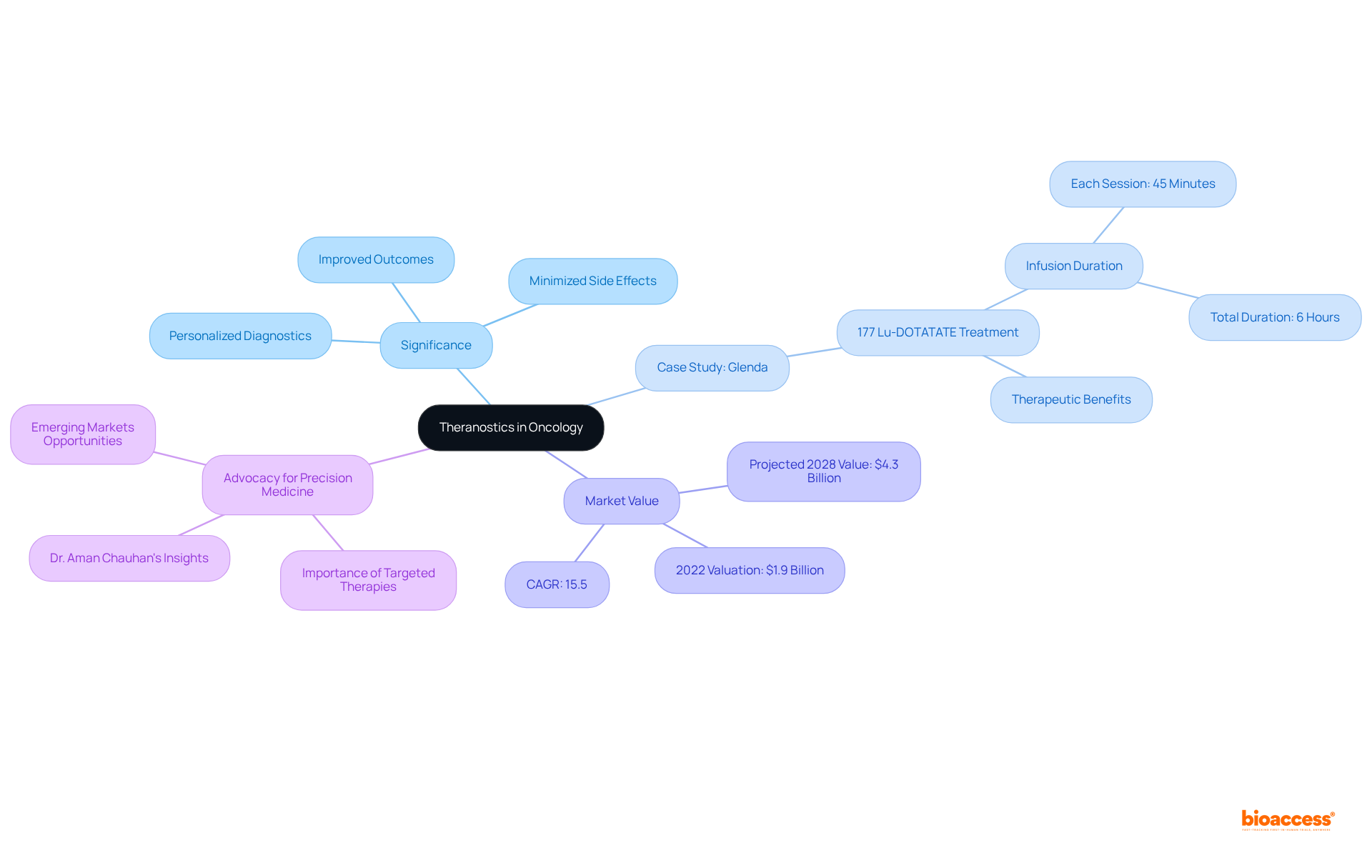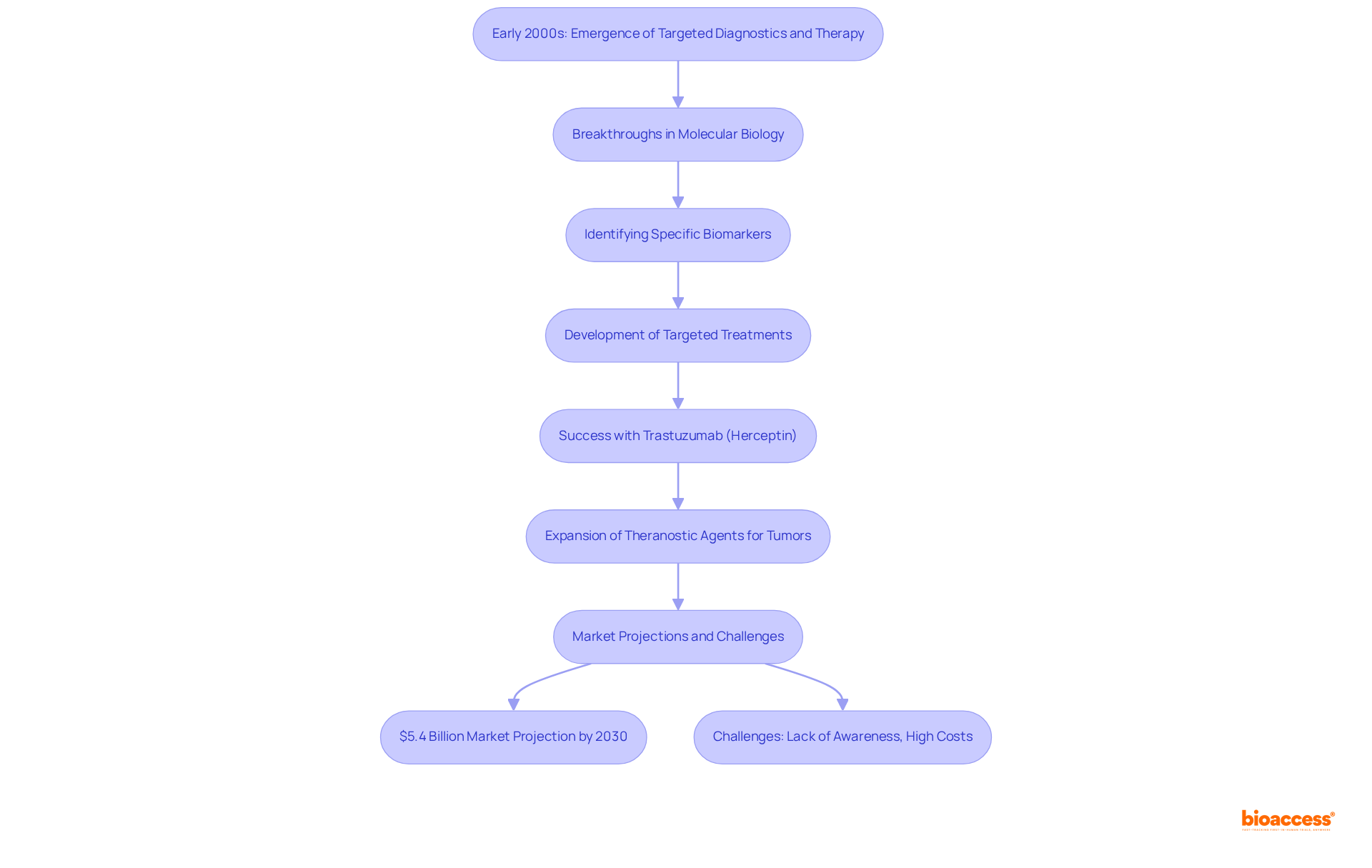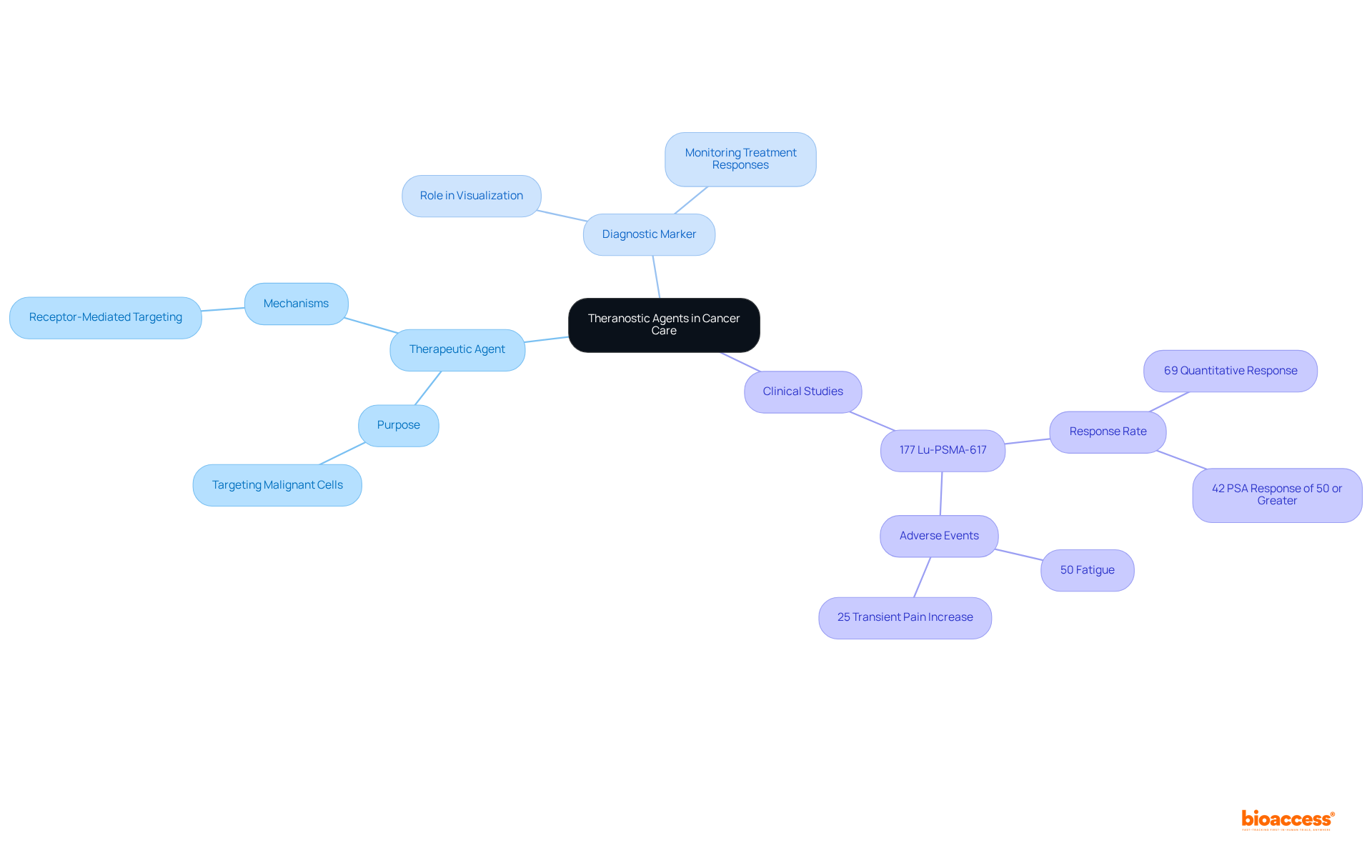


The article emphasizes the crucial role of theranostics in oncology research, seamlessly integrating targeted therapies with diagnostic testing to tailor cancer treatment according to specific tumor biomarkers. This innovative approach not only boosts the effectiveness of therapies and minimizes side effects but also signifies a significant shift towards precision medicine. This trend is underscored by rising market projections and a growing number of successful case studies in cancer management, highlighting the importance of adapting treatment strategies to individual patient needs.
The intersection of diagnostics and therapeutics in oncology has given rise to a revolutionary approach known as theranostics, which promises to redefine cancer treatment. This innovative strategy tailors therapies to the unique characteristics of individual tumors, enhancing treatment efficacy while minimizing side effects. Such advancements offer a compelling glimpse into the future of personalized medicine. However, as the field evolves, significant challenges remain in biomarker identification, regulatory approvals, and accessibility. These challenges raise critical questions about how to fully harness the potential of theranostics in oncology.
The term theranostics meaning in oncology research refers to a groundbreaking approach that merges targeted therapies with diagnostic testing, combining the concepts of 'therapeutics' and 'diagnostics.' This innovative strategy aids in recognizing specific biomarkers within tumors, enabling the creation of personalized care plans that not only enhance therapeutic efficacy but also mitigate adverse effects.
A notable instance is the case of Glenda, a 61-year-old individual with neuroendocrine tumors, who experienced substantial benefits from the 177 Lu-DOTATATE approach. Each infusion session lasted approximately 45 minutes, with her therapeutic dose administered every eight weeks, showcasing the practical advantages of this method.
The significance of personalized diagnostics is underscored by its potential to revolutionize oncology treatment, highlighting theranostics meaning in oncology research and ensuring individuals receive therapies tailored to their unique tumor characteristics. This customized approach has been shown to significantly improve outcomes and survival rates, as evidenced by the growing body of research in this field.
The global market for targeted diagnostics and therapeutics was valued at $1.9 billion in 2022 and is projected to reach $4.3 billion by 2028, highlighting the increasing emphasis on personalized treatments in effectively managing cancer. As oncologists, including specialists like Dr. Aman Chauhan, continue to advocate for precision medicine, the theranostics meaning in oncology research remains central to enhancing treatment strategies and patient care.

The emergence of targeted diagnostics and therapy in the early 2000s marked a significant advancement in clinical research, propelled by breakthroughs in molecular biology and genomics. Initial studies focused on identifying specific biomarkers associated with various tumors, leading to the development of targeted treatments. A notable early success in personalized medicine was the management of breast tumors using trastuzumab (Herceptin), which specifically targets the HER2 protein. Over time, the field has expanded considerably, with a variety of theranostic agents now available for different tumor types, including prostate and lung cancers, which illustrates the theranostics meaning in oncology research. This evolution underscores a growing recognition of personalized medicine's critical role in oncology.
As the personalized medicine market is projected to reach $5.4 billion by 2030, growing at a CAGR of 15.2% from 2023 to 2030, it highlights the increasing demand for tailored care strategies. However, this market faces challenges, including:
Additionally, the rising prevalence of long-term conditions necessitates innovative approaches to managing malignancies. The diverse patient populations in regions like the Balkans, combined with the regulatory agility in Latin America, further enrich the global context of theranostics meaning in oncology research, establishing it as a vital focus area in the field of oncology.

Theranostic agents illustrate the theranostics meaning in oncology research, as they consist of two essential components: a therapeutic agent and a diagnostic marker. The therapeutic agent is designed to specifically target and destroy malignant cells, while the diagnostic marker enables visualization and monitoring of treatment responses. Notably, radiolabeled compounds can diagnose and treat tumors simultaneously by delivering targeted radiation directly to the affected areas. The mechanisms of action typically involve receptor-mediated targeting, wherein the therapeutic agent binds to specific receptors on malignant cells, inducing cell death while preserving healthy tissues. This dual functionality markedly enhances the effectiveness of malignancy therapies, thereby illustrating theranostics meaning in oncology research as a transformative method in contemporary oncology.
Recent studies underscore the potential of these agents, with therapies such as 177 Lu-PSMA-617 demonstrating a 69% quantitative response rate in individuals with metastatic castration-resistant prostate cancer (mCRPC). Furthermore, 42% of individuals experienced a PSA response of 50% or greater, highlighting the capability of these agents to improve patient outcomes effectively. However, it is crucial to recognize that 50% of patients reported fatigue as an adverse event, which emphasizes the necessity for vigilant monitoring during treatment. This underscores the importance of collaboration and the need for ongoing research in the field.

The application of personalized medicine in oncology presents significant challenges that must be addressed to fully realize its potential. A primary concern lies in the complexity of biomarker identification and validation, which demands extensive research and rigorous clinical trials. The regulatory approval timelines for theranostic agents, which highlight theranostics meaning in oncology research, are often intricate, leading to delays that impede timely access to these innovative treatments. While ethical approvals for clinical trials can typically be achieved in just 4-6 weeks, the overall process may still extend due to varying regulatory requirements across regions, complicating trial setup and approval.
Moreover, it is crucial that healthcare providers receive the necessary training to accurately interpret diagnostic results and effectively administer targeted therapies. This training gap can obstruct the successful integration of targeted therapies into clinical practice. Industry leaders, including Professor Andrew M. Scott, emphasize the necessity of skilled healthcare professionals to navigate these complexities. Additionally, the high costs associated with the development and production of theranostic agents highlight the theranostics meaning in oncology research and pose a significant barrier to accessibility, limiting the advantages of these advanced therapies.
Addressing these intricate challenges is essential for unlocking the full potential of targeted therapies in oncology. Streamlined regulatory processes and enhanced collaboration among stakeholders are vital to facilitate the development and implementation of these innovative solutions. bioaccess offers comprehensive clinical trial management services, encompassing:
Such expertise can significantly aid in overcoming these barriers. By leveraging these resources, the healthcare community can harness the power of theranostics meaning in oncology research to enhance patient outcomes in cancer treatment.

The integration of theranostics into oncology signifies a transformative shift in cancer treatment, effectively merging therapeutic and diagnostic capabilities to craft personalized care plans tailored to individual tumor characteristics. This innovative approach not only enhances the effectiveness of therapies but also minimizes the likelihood of adverse effects, ultimately leading to improved patient outcomes and survival rates.
Key insights have emerged throughout the exploration of theranostics, including:
Significant advancements in identifying biomarkers and the burgeoning market for personalized medicine underscore the importance of this field, as evidenced by real-world examples and clinical successes. However, the complexities of regulatory approvals and the necessity for skilled healthcare professionals highlight the obstacles that must be navigated to fully harness the potential of theranostics.
As the landscape of oncology continues to evolve, embracing the principles of theranostics will be crucial for advancing cancer care. Stakeholders in the healthcare community are urged to prioritize collaboration, invest in training, and advocate for streamlined regulatory processes. By doing so, the full benefits of theranostics can be realized, paving the way for more effective and personalized cancer treatments that ultimately enhance the lives of patients worldwide.
What is theranostics in oncology?
Theranostics in oncology refers to an innovative approach that combines targeted therapies with diagnostic testing, integrating the concepts of therapeutics and diagnostics to create personalized care plans based on specific tumor biomarkers.
How does theranostics benefit cancer treatment?
Theranostics enhances therapeutic efficacy and reduces adverse effects by enabling the development of personalized treatment plans tailored to the unique characteristics of an individual's tumor.
Can you provide an example of theranostics in action?
An example is the case of Glenda, a 61-year-old with neuroendocrine tumors, who benefited from the 177 Lu-DOTATATE approach, receiving infusions every eight weeks, demonstrating the practical advantages of this method.
What is the significance of personalized diagnostics in oncology?
Personalized diagnostics have the potential to revolutionize oncology treatment by ensuring that individuals receive therapies tailored to their unique tumor characteristics, significantly improving outcomes and survival rates.
What is the current market value for targeted diagnostics and therapeutics?
The global market for targeted diagnostics and therapeutics was valued at $1.9 billion in 2022 and is projected to reach $4.3 billion by 2028, indicating a growing emphasis on personalized cancer treatments.
Who advocates for the importance of theranostics in oncology?
Oncologists, including specialists like Dr. Aman Chauhan, advocate for precision medicine, emphasizing the central role of theranostics in enhancing treatment strategies and patient care in oncology.